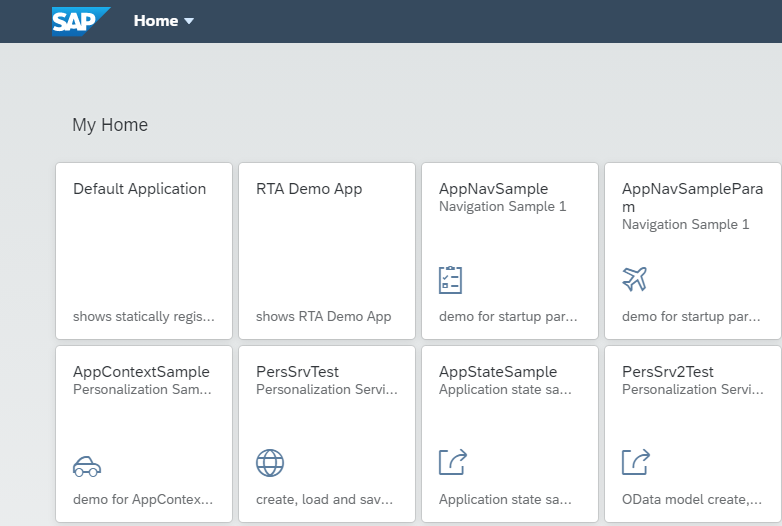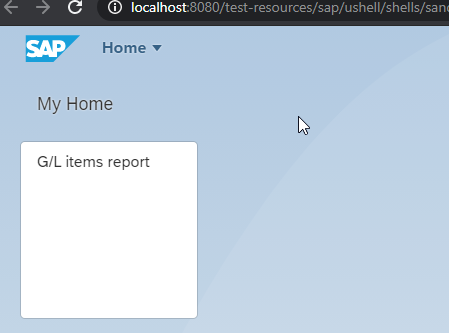fiori-tools 
Library of extensions for SAP Fiori Tools ( @sap/ux-ui5-tooling )
UI5 cli makes it possible to develop and test apps on your local machine. Fiori tools is a set of server middleware which delivers even greater experience.
This package brings features on top of functions developed by SAP
- List of middlewares
How to install
Install the module
npm install fiori-tools @sap/ux-ui5-toolingadd the following section to you package.json file
"ui5": {
"dependencies": [
"@sap/ux-ui5-tooling",
"fiori-tools"
]This module can be used indepentently from @sap/ux-ui5-tooling also but it's not a target use case.
fiori-tools-home-page: Redirect to a home page
What: a very simple feature - redirection to a default page from the empty path
Why: in the template provided by Fiori Tools application generator we can see test/flpSandbox.html and test/flpSandboxMockServer.html files. Besides of that we have also sandbox launchpad available as a part of UI5 library and we can take it directly from the test resources. Fiori Launchpad - Sandbox for application development
In addition, sandbox launchpad delivers really nice feature to maintain application config as a separate json file which creates even a space to generate it via API.
How to use: just declare it like this
server:
customMiddleware:
- name: fiori-tools-home-page
beforeMiddleware: serveIndex
configuration:
home_page: "/test-resources/sap/ushell/shells/sandbox/fioriSandbox.html"it is important to remember that /test-reources is supposed to be published like this:
server:
customMiddleware:
- name: fiori-tools-proxy
beforeMiddleware: compression
configuration:
ui5:
path:
- /resources
- /test-resources
url: https://sapui5.hana.ondemand.com
version: 1.78.0fiori-tools-proxy-cdn: bootstrap SAPUI5 from CDN
What: this concept is described in SAPUI5 SDK - Demo Kit. The idea is simple - we use an absolute URL in bootstrap script instead of the relative one. This extension transforms the original page like this
<script id="sap-ushell-bootstrap" src="../../bootstrap/sandbox.js"></script>
<script
id="sap-ui-bootstrap"
src="../../../../../resources/sap-ui-core.js"
data-sap-ui-evt-oninit="main();"
data-sap-ui-libs="sap.m"
data-sap-ui-async="true"
data-sap-ui-theme="sap_fiori_3"
data-sap-ui-compatVersion="1.16"
data-sap-ui-xx-bindingSyntax="complex"
></script>
<script src="../../bootstrap/standalone.js"></script>into properly resolved page like that
<script
id="sap-ushell-bootstrap"
src="https://sapui5.hana.ondemand.com/1.78.0/test-resources/sap/ushell/bootstrap/sandbox.js"
></script>
<script
id="sap-ui-bootstrap"
src="https://sapui5.hana.ondemand.com/1.78.0/resources/sap-ui-core.js"
data-sap-ui-evt-oninit="main();"
data-sap-ui-libs="sap.m"
data-sap-ui-theme="sap_fiori_3"
data-sap-ui-compatversion="1.16"
data-sap-ui-xx-bindingsyntax="complex"
></script>
<script src="https://sapui5.hana.ondemand.com/1.78.0/test-resources/sap/ushell/bootstrap/standalone.js"></script>Why: basically the main reason for that is performance. In case if you are not UI5 library developer then you probably don't need even to send these requests for /resources and /test-resources to your local machine and then to resend them to the internet. In debug mode Fiori application can easily send around 1K files reading sources 1 by 1 so why you should load your PC if your browser can do this directly. Another reason is caching - by using an absolute path it doesn't matter on which local port your service is running - those files will be always cached within a specific UI5 version.
How to use:
You can notice again that this middleware is supposed to work together with fiori-tools-proxy. In fact it's created to make life of a main proxy middleware much simpler and to send less traffic on it
server:
customMiddleware:
- name: fiori-tools-proxy-cdn
beforeMiddleware: fiori-tools-proxy
configuration:
fiori_tools_proxy:
ui5:
url: https://sapui5.hana.ondemand.com
version: 1.78.0
home_page: "/test-resources/sap/ushell/shells/sandbox/fioriSandbox.html"you may notice that it uses the same configuration as the original middleware fiori-tools-proxy. Therefore if we want to use all of them we can use yaml merge feature to make file more compact:
customConfiguration: &global
fiori_tools_proxy: &fiori-tools-proxy
ui5:
path:
- /resources
- /test-resources
url: https://sapui5.hana.ondemand.com
version: 1.78.0
home_page: "/test-resources/sap/ushell/shells/sandbox/fioriSandbox.html"
server:
customMiddleware:
- name: fiori-tools-proxy
beforeMiddleware: compression
configuration:
<<: *fiori-tools-proxy
- name: fiori-tools-proxy-cdn
beforeMiddleware: fiori-tools-proxy
configuration:
<<: *global
- name: fiori-tools-home-page
beforeMiddleware: serveIndex
configuration:
<<: *globalfiori-tools-neo-app: support neo-app.json for existing applications
What: this middleware support neo-app.json file for ui5 apps launched with ui5 serve/fiori run. New middleware fiori-tools-proxy has a backend configuration however for some projects there might be too much rules. Also it requires separate backend host definition for each of rules while neo-app.json supports destinations.
How to use:
declare middleware in ui5.yaml
server:
customMiddleware:
- name: fiori-tools-neo-app
afterMiddleware: fiori-tools-proxyprovide neo-app.json in the project root folder
{
"routes": [
{
"path": "/odata/northwind",
"target": {
"type": "destination",
"name": "northwind",
"entryPath": "/V2/Northwind/Northwind.svc"
},
"description": "Odata:dev"
}
]
}provide neo-dest.json file with configuration like this
{ "northwind": { "target": "https://services.odata.org" } }start the server and check how it works
curl localhost:8080/odata/northwind/Regionsappconfig/fioriSandboxConfig.json
All modules of this project are actually built around page /test-resources/sap/ushell/shells/sandbox/fioriSandbox.html. This is just a simple Fiori launchpad page which uses /appconfig/fioriSandboxConfig.json as configuration file
By default we have a page like this:
But adding a file like this:
{
"applications": {
"GL-lineItems": {
"title": "G/L items report"
}
},
"services": {
"LaunchPage": {
"adapter": {
"config": {
"groups": []
}
}
},
"NavTargetResolution": {
"adapter": {
"config": {
"applications": {
"GL-lineItems": {
"additionalInformation": "SAPUI5.Component=fin.gl.glview.display.FIN_GL_LITB_GLVExtension",
"url": "/"
}
}
}
}
}
}
}we have a page like this:
With this config we can also test cross-app navigations.



